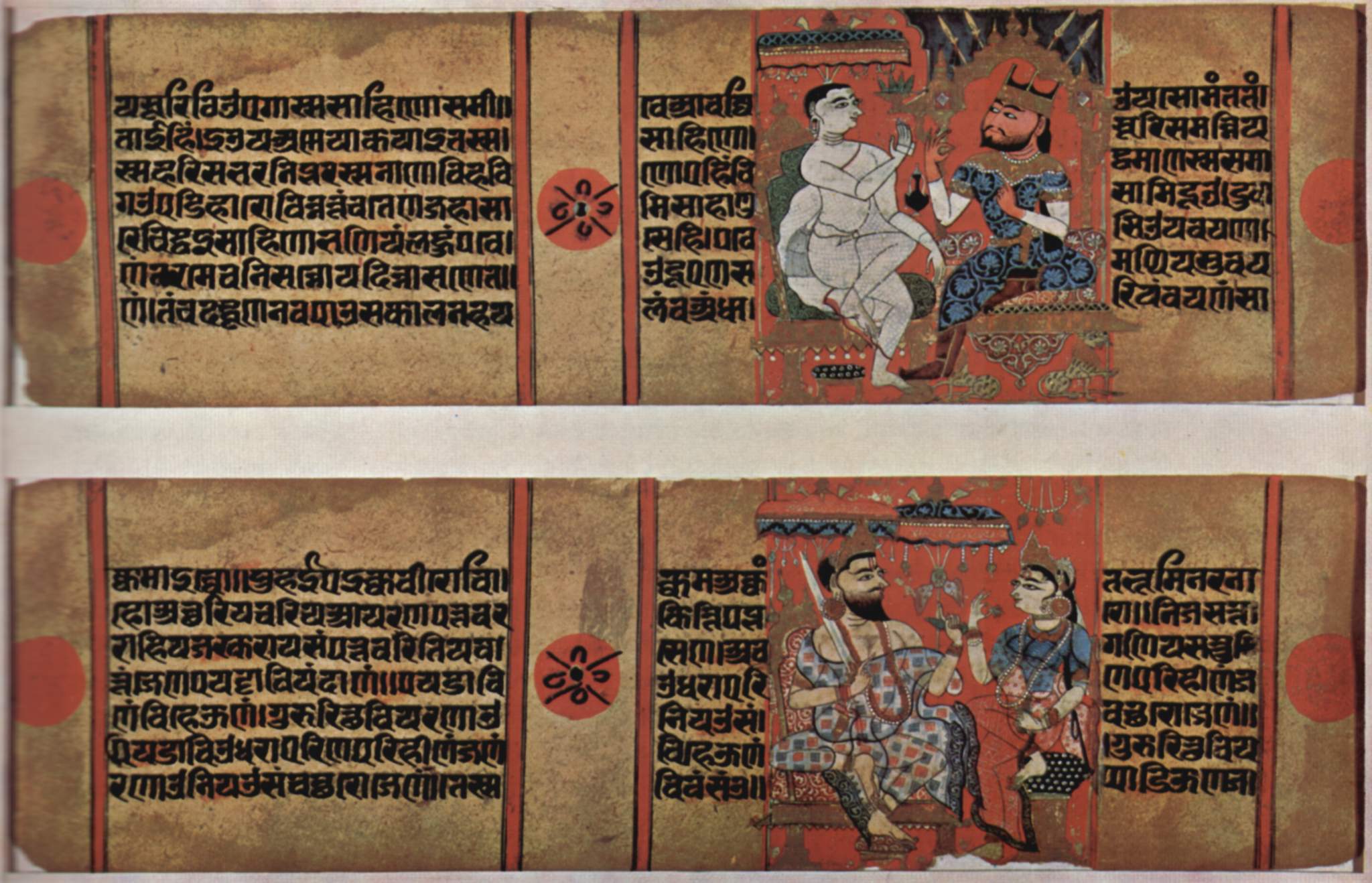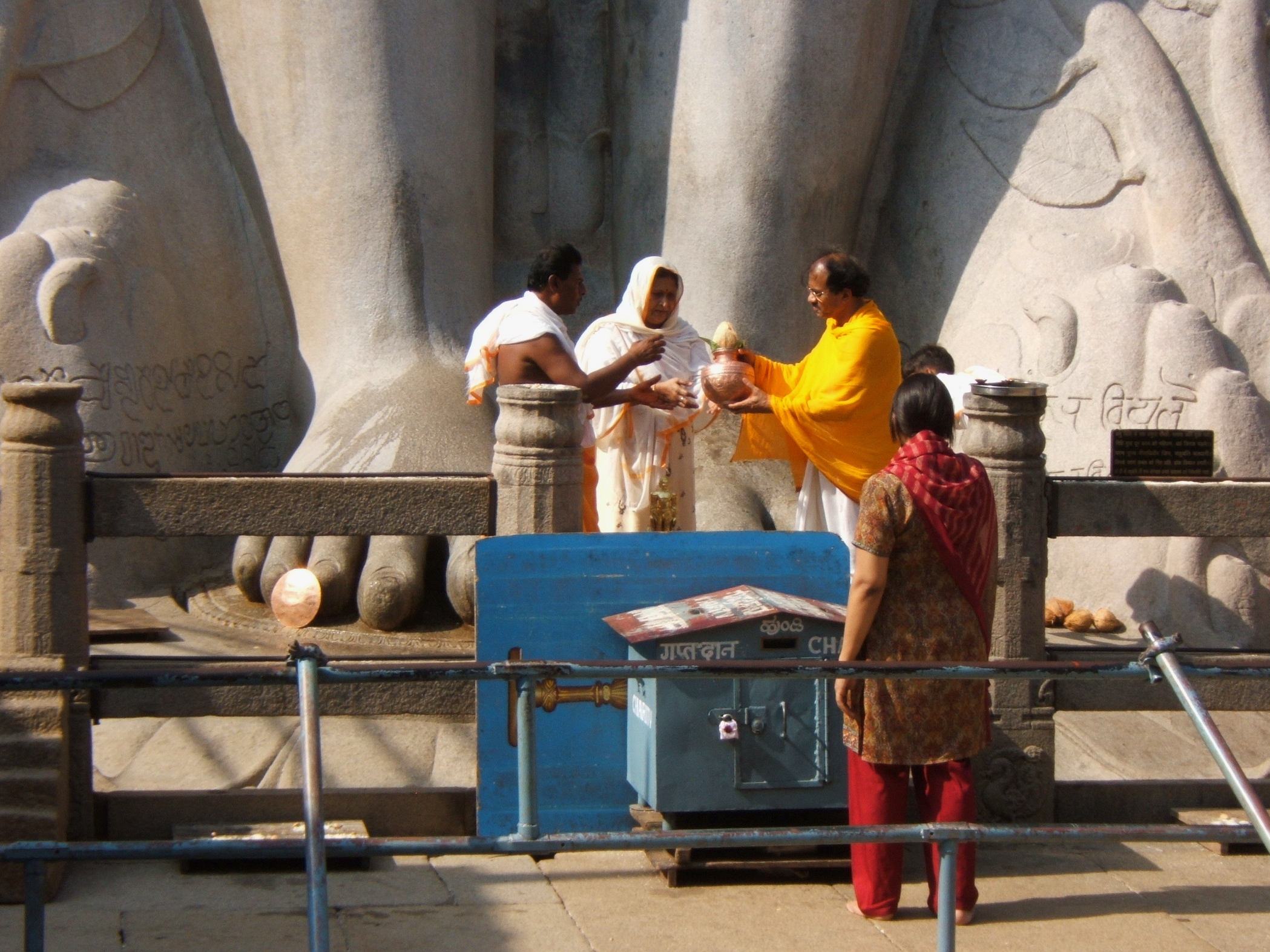|
Puruṣārthasiddhyupāya
''Puruṣārthasiddhyupāya'' is a major Jain text authored by Amritchandra. Acharya Amritchandra was a Digambara monk who lived in the tenth century ( Vikram Samvat). ''Puruṣārthasiddhyupāya'' deals with the conduct of householder (''śrāvaka'') in detail. Another major Jain text that deals with householder's conduct is '' Ratnakaranda śrāvakācāra''. ''Puruṣārthasiddhyupāya'' also deals extensively with the Jain concept of ahiṃsā. Content Like in all Jain texts, the first verse (''śloka'') of ''Puruṣārthasiddhyupāya'' is an invocation: ''Ahimsā'' ''Puruṣārthasiddhyupāya'' deals extensively with the Jain concept of '' ahimsā'' (refraining from causing harm) particularly in reference to its observance as a minor vow (''anuvrata'') by the ''śrāvaka''. In Verse 43, deliberate ''himsā'' (causing harm) is defined as "harm caused to physical or psychical vitalities when acting under the influence of passions" (verse 43). Amritchandra then elabor ... [...More Info...] [...Related Items...] OR: [Wikipedia] [Google] [Baidu] |
Ahimsa In Jainism
In Jainism, ''ahiṃsā'' (', alternatively spelled 'ahinsā', Sanskrit: अहिंसा IAST: ', Pali, Pāli: ') is a fundamental principle forming the cornerstone of its Ethics of Jainism, ethics and doctrine. The term ''ahiṃsā'' means nonviolence, non-injury, and absence of desire to harm any life forms. Veganism, vegetarianism and other nonviolent practices and rituals of Jains flow from the principle of ahimsa. There are five specific transgressions of Ahimsa principle in Jain scriptures – binding of animals, beating, mutilating limbs, overloading, and withholding food and drink. Any other interpretation is subject to individual choices and not authorized by scriptures. The Jain concept of ''ahimsa'' is very different from the concept of nonviolence found in other philosophies. Violence is usually associated with causing harm to others. But according to the Jain philosophy, violence refers primarily to injuring one's own self – behaviour which inhibits the soul' ... [...More Info...] [...Related Items...] OR: [Wikipedia] [Google] [Baidu] |
Jainism
Jainism ( ), also known as Jain Dharma, is an Indian religions, Indian religion whose three main pillars are nonviolence (), asceticism (), and a rejection of all simplistic and one-sided views of truth and reality (). Jainism traces its spiritual ideas and history through the succession of twenty-four , supreme preachers of ''dharma''. The first in the current time cycle is Rishabhadeva, who tradition holds lived millions of years ago; the 23rd is Parshvanatha, traditionally dated to the 9th century Common Era, BCE; and the 24th is Mahāvīra, Mahavira, who lived . Jainism is considered an eternal ''dharma'' with the guiding every time cycle of the Jain cosmology, cosmology. Central to understanding Jain philosophy is the concept of ''bhedavijñāna'', or the clear distinction in the nature of the soul and non-soul entities. This principle underscores the innate purity and potential for liberation within every Jīva (Jainism), soul, distinct from the physical and menta ... [...More Info...] [...Related Items...] OR: [Wikipedia] [Google] [Baidu] |
Amritchandra
Amritchandra (f. 10th-century CE) was a Digambara Jain Acharya who wrote commentaries on Samayasāra called ''Atmakhyati'' and ''Samaysar Kalasha'', Pravachanasara and Pancastikayasara. He also wrote independent books of Puruşārthasiddhyupāya and Tattvartha Sara. He wrote in Sanskrit Sanskrit (; stem form ; nominal singular , ,) is a classical language belonging to the Indo-Aryan languages, Indo-Aryan branch of the Indo-European languages. It arose in northwest South Asia after its predecessor languages had Trans-cultural ... language. References Citations Sources * * 10th-century Indian writers Linguists of Sanskrit Jain acharyas Year of death unknown {{jainism-stub ... [...More Info...] [...Related Items...] OR: [Wikipedia] [Google] [Baidu] |
Jain Text
Jain literature () refers to the literature of the Jain religion. It is a vast and ancient literary tradition, which was initially transmitted orally. The oldest surviving material is contained in the canonical ''Jain Agamas'', which are written in Ardhamagadhi, a Prakrit ( Middle-Indo Aryan) language. Various commentaries were written on these canonical texts by later Jain monks. Later works were also written in other languages, like Sanskrit and Maharashtri Prakrit. Jain literature is primarily divided between the canons of the ''Digambara'' and '' Śvētāmbara'' orders. These two main sects of Jainism do not always agree on which texts should be considered authoritative. More recent Jain literature has also been written in other languages, like Marathi, Tamil, Rajasthani, Dhundari, Marwari, Hindi, Gujarati, Kannada, Malayalam and more recently in English. Beliefs Jains believe their religion is eternal, and the teachings of the first tīrthaṅkara, Ṛṣabhan ... [...More Info...] [...Related Items...] OR: [Wikipedia] [Google] [Baidu] |
Digambara Acharya
A Digambara monk or Digambara Sādhu (also ''muni'', ''sādhu'') is a Sādhu in the Digambar tradition of Jainism, and as such an occupant of the highest limb of the four-fold ''sangha''. Digambar Sādhus have 28 primary attributes which includes observance of the five supreme vows of ''ahimsa'' (non-injury), truth, non-thieving, celibacy and non-possession. A Digambar Sādhu is allowed to keep only a feather whisk, a water gourd and scripture with him. In Jainism, those '' śrāvakas'' (householders) who wish to attain ''moksha'' (liberation) renounce all possessions and become an ascetic. According to the Jain text, ''Dravyasamgraha'': Digambar Sādhus are also called ''nirgranth'' which means "one without any bonds". The term originally applied to those of them who were on the point of attaining omniscience, on the attainment of which they were called ''munis''. Rishabhanath (the first '' Tirthankar'') is said to be the first ''Digambar'' Sādhu of the present half ... [...More Info...] [...Related Items...] OR: [Wikipedia] [Google] [Baidu] |
Vikram Samvat
Vikram Samvat (ISO: ''Vikrama Saṁvata''; abbreviated VS), also known as the Vikrami calendar is a Hindu calendar historically used in the Indian subcontinent and still also used in several Indian states and Nepal. It is a lunisolar calendar, using twelve to thirteen lunar months each solar sidereal years. The year count of the Vikram Samvat calendar is usually 57 years ahead of the Gregorian calendar, except during January to April, when it is ahead by 56 years. Vikram Samvat is an official calendar of Nepal. And unlike India where it is used only for religious dates, the solar version of Vikram Samvat is an official calendar used for everything from school sessions to legal contracts to any official functions. History A number of ancient and medieval inscriptions used the Vikram Samvat. Although it was reportedly named after the legendary king Vikramaditya, the term "Vikrama Samvat" does not appear in the historical record before the 9th century; the same calendar sy ... [...More Info...] [...Related Items...] OR: [Wikipedia] [Google] [Baidu] |
Śrāvaka (Jainism)
In Jainism, the word Śrāvaka or Sāvaga (from Jain Prakrit) is used to refer to the Jain laity (householders). The word ''śrāvaka'' has its roots in the word ''śrāvana'', i.e. ''the one who listens'' (to the discourses of the saints). The ''tirthankara'' restores or organises the '' sangha'', a fourfold order of ''muni'' (male monastics), '' aryika'' (female monastics), '' śrāvaka''s (male followers) and ''śrāvikā''s (female followers). In Jainism, there are two kinds of votaries: *The householder (one with minor vows) *The homeless ascetic (one with major vows). According to the Jain text '' Puruşārthasiddhyupāya'': Ratnakaranda śrāvakācāra, a major Jain text, discusses the conduct of a Śrāvaka in detail. Six essentials In Jainism, six essential duties (''avashyakas'') are prescribed for a ''śrāvaka''. These help the laity in achieving the principle of ahimsa which is necessary for his/her spiritual upliftment. The six duties are: #Worship of ... [...More Info...] [...Related Items...] OR: [Wikipedia] [Google] [Baidu] |
Ratnakaranda śrāvakācāra
Ratnakaranda śrāvakācāra is a Jain text composed by Aacharya Samantbhadra Swamy (second century CE), an ''acharya'' of the Digambara sect of Jainism. Aacharya Samantbhadra Swamy was originally from Kanchipuram, Tamil Nadu. Ratnakaranda śrāvakācāra is the earliest and one of the best-known śrāvakācāra. A śrāvakācāra discusses the conduct of a Śrāvaka or Jain lay practitioner. Hiralal Shastri mentions 29 such texts from 2nd century CE to modern times.Shravakachara Samgraha, Part 4, Pages Ka-Kha, Hiralal Shastri, Jivaraj Jain Granthmala, 1998 Overview First verse of the ''Ratnakaranda śrāvakācāra'' is dedicated to Vardhamāna Mahāvīra, the 24th Tirthankara In Jainism, a ''Tirthankara'' (; ) is a saviour and supreme preacher of the ''Dharma (Jainism), dharma'' (righteous path). The word ''tirthankara'' signifies the founder of a ''Tirtha (Jainism), tirtha'', a fordable passage across ''Saṃsā ...: :Namāh śri Vardhamāna-e nirdhutakalilātma ... [...More Info...] [...Related Items...] OR: [Wikipedia] [Google] [Baidu] |
śloka
Shloka or śloka ( , from the root , Macdonell, Arthur A., ''A Sanskrit Grammar for Students'', Appendix II, p. 232 (Oxford University Press, 3rd edition, 1927).) in a broader sense, according to Monier-Williams's dictionary, is "any verse or stanza; a proverb, saying"; but in particular it refers to the 32-syllable verse, derived from the Vedic ''anuṣṭubh'' metre, used in the ''Bhagavad Gita'' and many other works of classical Sanskrit literature. In its usual form it consists of four '' pādas'' or quarter-verses, of eight syllables each, or (according to an alternative analysis) of two half-verses of 16 syllables each. The metre is similar to the Vedic ''anuṣṭubh'' metre, but with stricter rules. The ''śloka'' is the basis for Indian epic poetry, and may be considered the Indian verse form ''par excellence'', occurring as it does far more frequently than any other metre in classical Sanskrit poetry. The ''śloka'' is the verse-form generally used in the ''Mahabharata' ... [...More Info...] [...Related Items...] OR: [Wikipedia] [Google] [Baidu] |
Ahimsa
(, IAST: , ) is the ancient Indian principle of nonviolence which applies to actions towards all living beings. It is a key virtue in Indian religions like Jainism, Buddhism and Hinduism. (also spelled Ahinsa) is one of the cardinal virtues of Jainism, where it is the first of the Jain Ethics, Pancha Mahavrata. It is also one of the central precepts of Hinduism and is the first of the five precepts of Buddhism. is inspired by the premise that all living beings have the spark of the divine spiritual energy; therefore, to hurt another being is to hurt oneself. is also related to the notion that all acts of violence have Karma, karmic consequences. While ancient scholars of Brahmanism had already investigated and refined the principles of , the concept reached an extraordinary development in the ethical philosophy of Jainism. Mahavira, the twenty-fourth and the last of Jainism, further strengthened the idea in . About , Valluvar emphasized and Ethics of eating meat, m ... [...More Info...] [...Related Items...] OR: [Wikipedia] [Google] [Baidu] |
Tattvartha Sutra
''Tattvārthasūtra'', meaning "On the Nature [''artha''] of Reality [''tattva'']" (also known as ''Tattvarth-adhigama-sutra'' or ''Moksha-shastra'') is an ancient Jain text written by ''Acharya (Jainism), Acharya'' Umaswami in Sanskrit between the 2nd and 5th centuries CE. The ''Tattvārthasūtra'' is regarded as one of the earliest, most authoritative texts in Jainism. It is accepted as authoritative in both its major sub-traditions – ''Digambara'' and ''Śvētāmbara'' – as well as the minor sub-traditions. It is a philosophical text, and its importance in Jainism is comparable with that of the ''Brahma Sutras'' and ''Yoga Sutras of Patanjali'' in Hinduism. In an aphoristic sutra style of ancient Indian texts, it presents the complete Jainism philosophy in 350 sutras over 10 chapters. The text has attracted numerous commentaries, translations and interpretations since the 5th-century. One of its sutras, ''Parasparopagraho Jivanam'' is the motto of Jainism. Its meaning ... [...More Info...] [...Related Items...] OR: [Wikipedia] [Google] [Baidu] |






